How to Clean Your Aquarium: 9 Steps
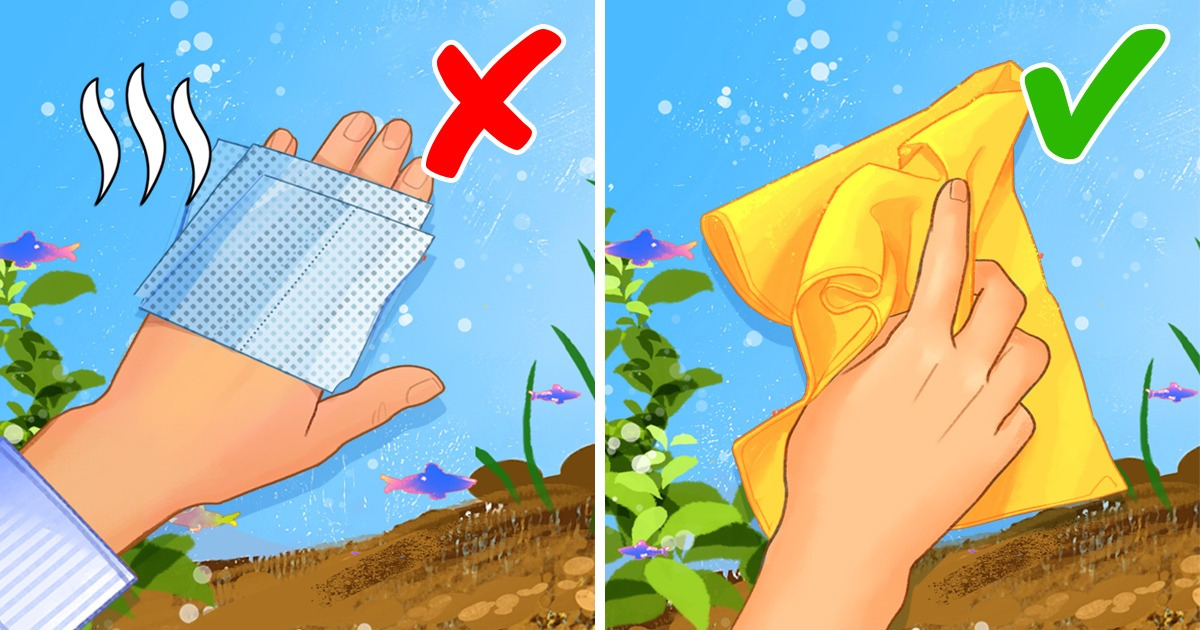
A clean aquarium not only looks good but also helps maintain the health and happiness of your fish. Over time, harmful substances like nitrates and metabolites accumulate in the aquarium, and that can harm your fish. The filter alone is not enough to keep the water clean, so it is necessary to clean the aquarium from time to time. Here is a 5-Minute Crafts guide to everything you need to know how to clean your aquarium.
How often should the aquarium be cleaned?
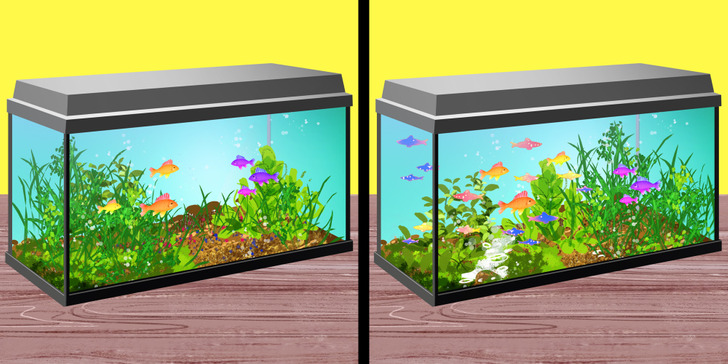
The frequency of cleaning your aquarium will depend on 2 things:
- The number of fish living in the aquarium
- The type of water change
You should partly change your fish tank’s water around every 2 to 3 weeks, and more regularly if you have a lot of fish in it. While you should rarely do a full fish tank water change, and only if absolutely necessary.
What you’ll need
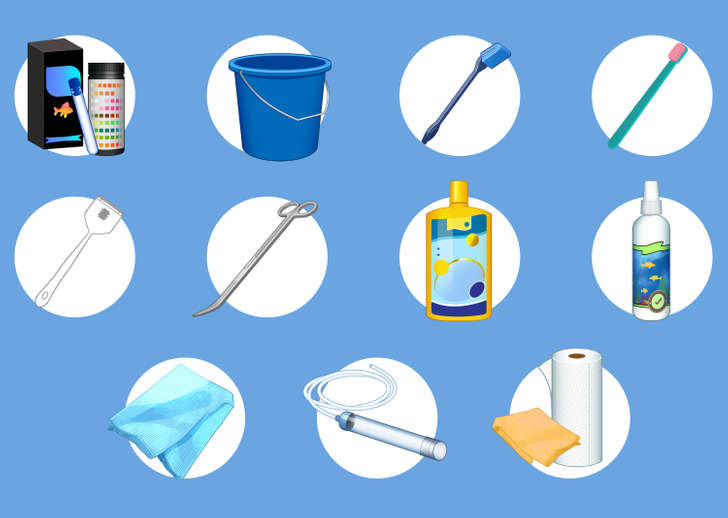
Before you start cleaning the aquarium, prepare the workspace and make sure you have all the necessary tools:
- Aquarium water test kit
- Bucket for holding dirty tank water
- Algae scraper (for glass or acrylic)
- Algae scraper blade attachment (for glass or acrylic)
- Toothbrush for cleaning algae off decor or plants
- Scissors for pruning plants
- Dechlorinator (also known as water conditioner)
- Glass cleaner
- Towel for wiping up water spills
- Glass cleaning cloth or paper towel
- Aquarium siphon (also known as a gravel vacuum)
How to clean your aquarium
Step 1: Test the water quality.
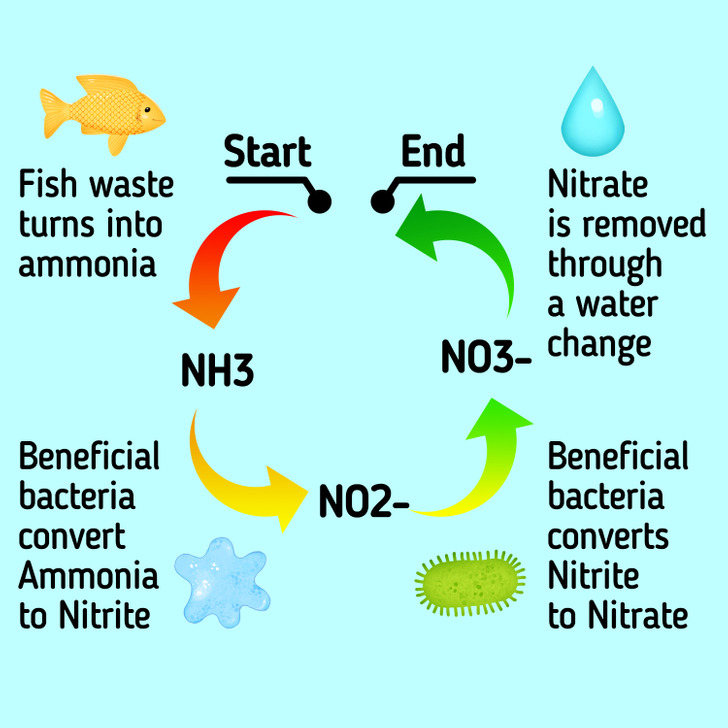
In the natural environment, there’s a whole ecosystem of microorganisms, plants, and animals that are in balance with one another. But in closed systems like an aquarium, you need to prepare a healthy, thriving environment for your fish to live in. This process is called aquarium cycling. In an aquarium, you feed your fish, your fish produces waste (also known as ammonia), and then bacteria and plants absorb the toxic waste so that the water is safer for your fish to live in. It usually takes up to 3 months before a new aquarium has fully converted its waste into nitrate.
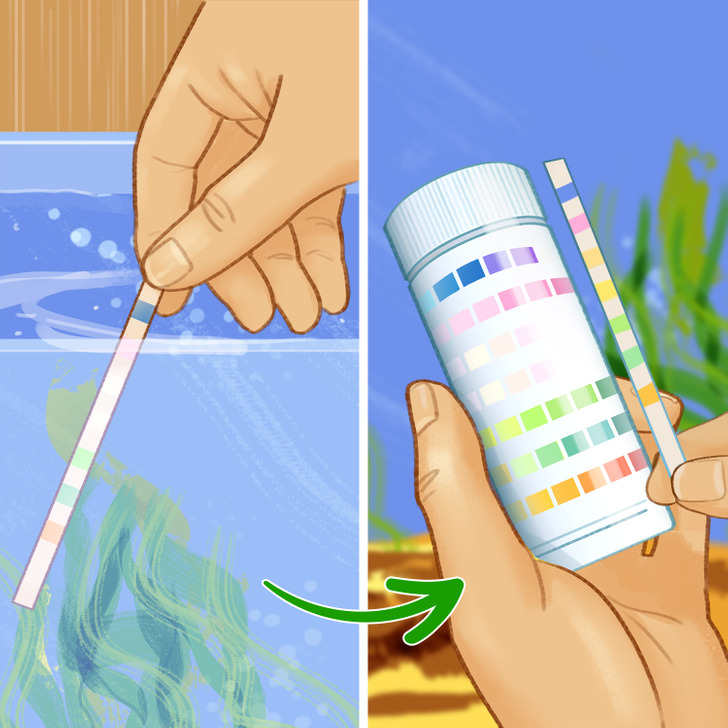
- If your aquarium hasn’t been cycled yet: chances are you just assembled it. In that case, you will need to test the water to determine if it has 0 ppm ammonia, 0 ppm nitrites, and less than 40 ppm nitrates. Higher levels of these waste compounds can be dangerous to fish.
- If your aquarium has already cycled: then you just need to maintain the nitrate levels below 40 ppm. You can do that by measuring the nitrates using a water test kit to determine how much water should be removed and if other steps need to be taken.
Note: You can measure the water quality using ammonia test strips and multi-test strips.
Step 2: Clean the inside glass.
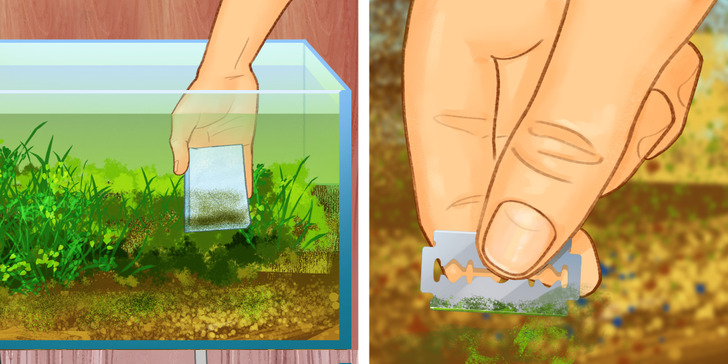
Begin cleaning the aquarium with water in it by wiping the inner glass with an algae pad. Use those pads from the pet shop because they are for sure free of any harmful chemicals for fish.
- Tip: If you come across stubborn residue on the glass, scrape it carefully with a razor blade, being careful to not cut yourself. If you have an acrylic aquarium, use a plastic razor blade so as not to scratch it.
Step 3: Clean the decorations and rocks, and prune the plants.
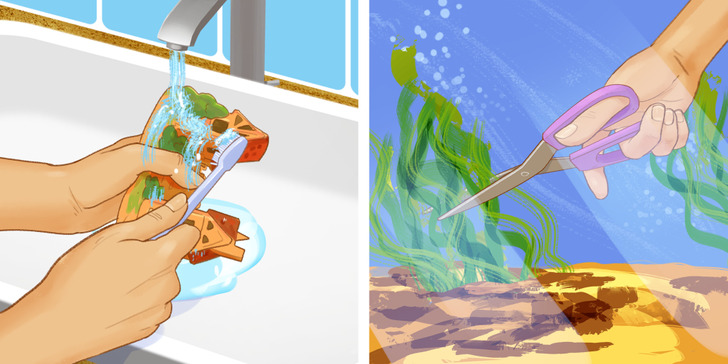
When you have finished cleaning the inner glass, it is time to scrub the decorations, rocks, and artificial plants, and trim the live plants.
- Soap is difficult to wash off and can be harmful to the fish, so don’t use it to clean the decorations. Just scrub everything well with an algae scraper or toothbrush in warm water.
- If you have an aquarium with live plants, pick up the dead leaves and trim down the overgrown leafage.
- When you vacuum the gravel, leave the decorations, rocks, and plants out of the tank. That way, none of the stirred-up debris from the gravel will be able to settle on them.
Step 4: Turn off equipment.
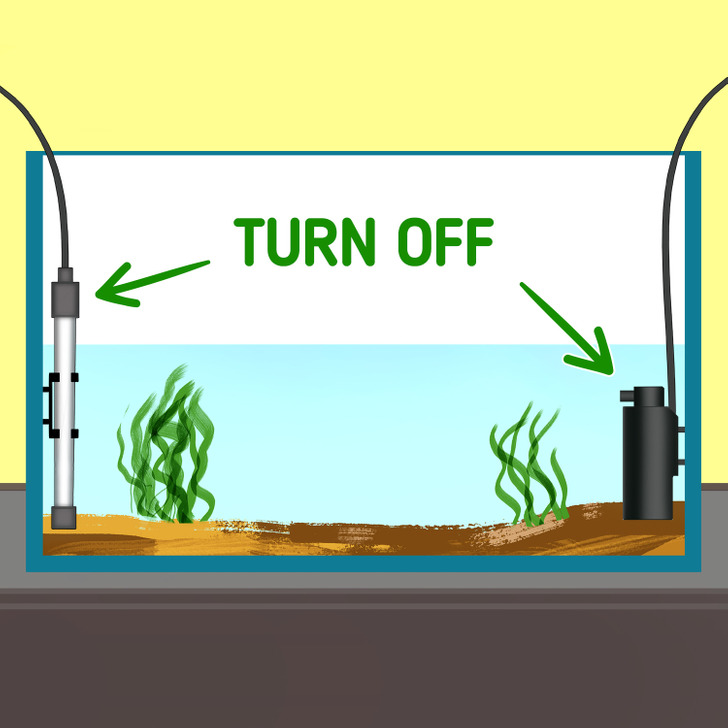
Turn off all equipment before removing water, as aquarium heaters and filters are not designed to operate without water and can therefore be damaged when operating in dry air.
Step 5: Vacuum the substrate.
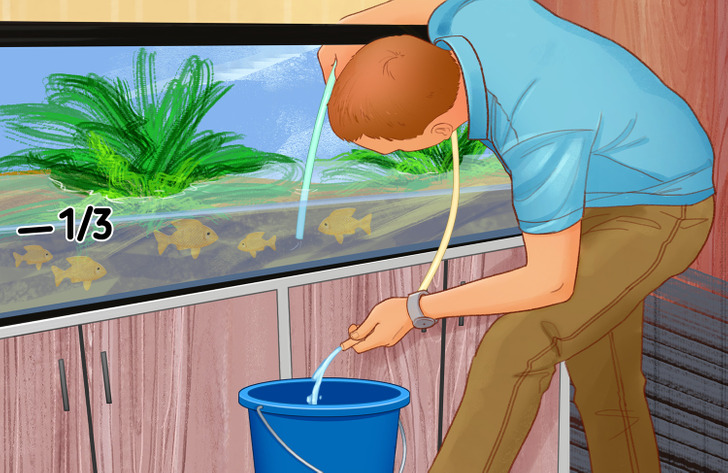
Take your aquarium siphon and vacuum approximately one-third of the substrate in the bucket. You will need to move any decorations or hardscape, as needed, since debris tends to collect underneath them. The siphon removes fish waste, uneaten food, and dead leaves from gravel or sand and removes old water from tanks and the excess nitrate in them.
- Note: Leave your fish in the aquarium. Since you will not completely drain the water from the aquarium, the fish will be left with enough water to swim in it. You don’t want to stress the fish by catching them, so it’s better to slowly clean around them.
Step 6: Clean the filter.
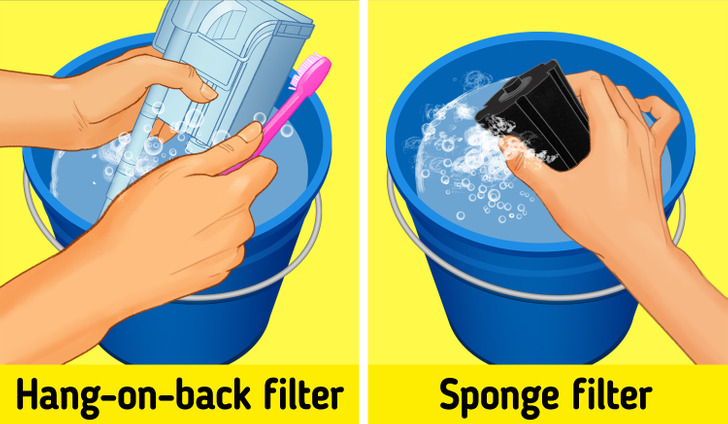
The filter should be cleaned at least once a month. It is like a garbage can where fish waste is collected and needs to be cleaned regularly to remove all the gunk before it becomes clogged or overflows. If you have a hang-on-back, canister, or corner box filter, swish it around and wash the filter media in your bucket of recently removed tank water. If you have a sponge filter, remove the foam portion and wring it multiple times in the bucket of old tank water.
- Note: Do not use soap, just water.
Step 7: Refill the water.
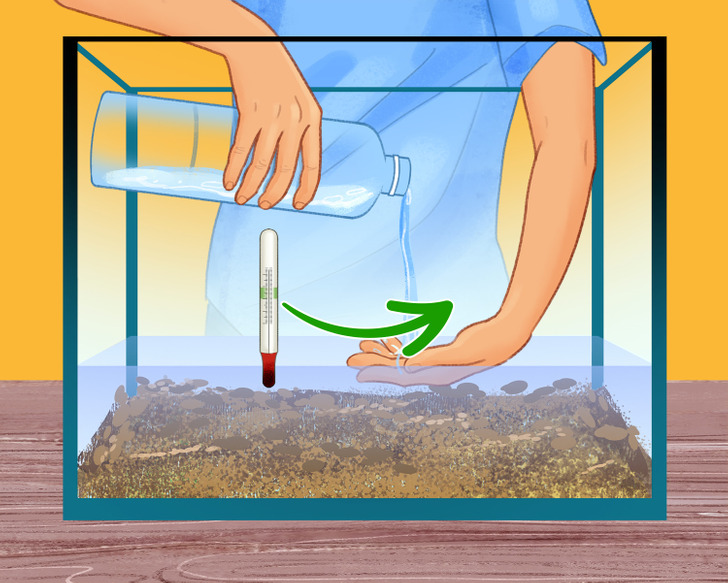
Now, you can fill your aquarium with fresh, clean water:
- Check the temperature of the existing aquarium water and then adjust the faucet until the tap water feels like it has the same amount of warmth.
- You can empty the bucket of old tank water onto the indoor and outdoor plants.
- Refill the bucket with tap water.
- Add dechlorinator into the bucket (dosed based on the bucket’s volume) or directly into the tank (dosed based on the aquarium’s volume).
- You can also add liquid fertilizer and/or root tabs for the substrate.
Step 8: Turn on the equipment.
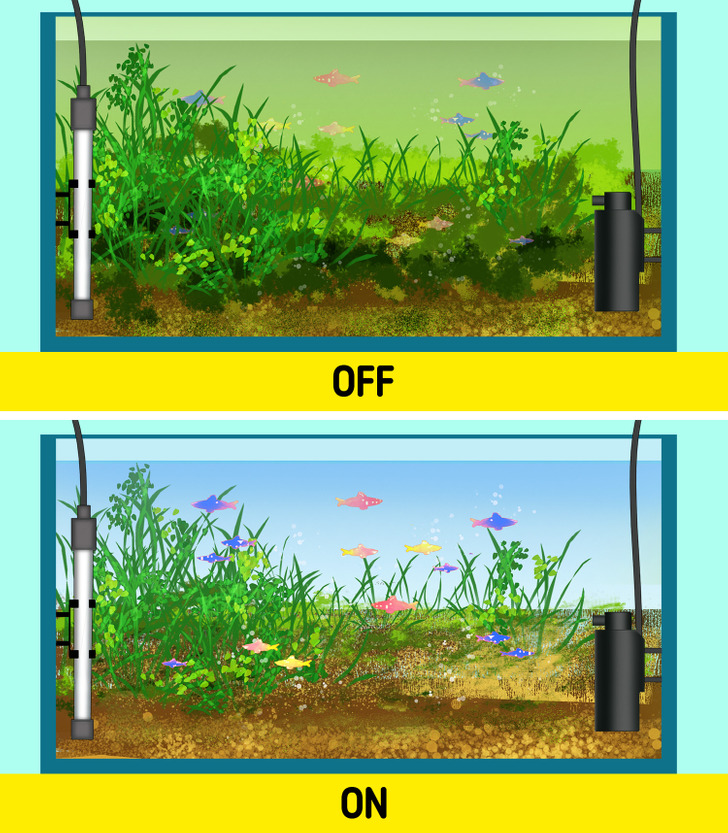
Your tank probably looks very dirty with all that particulate clouding up the water. When you turn on the heater and filter again, everything will clear up in an hour. The debris will settle down or get sucked up by the filter.
Step 9: Wipe the glass.
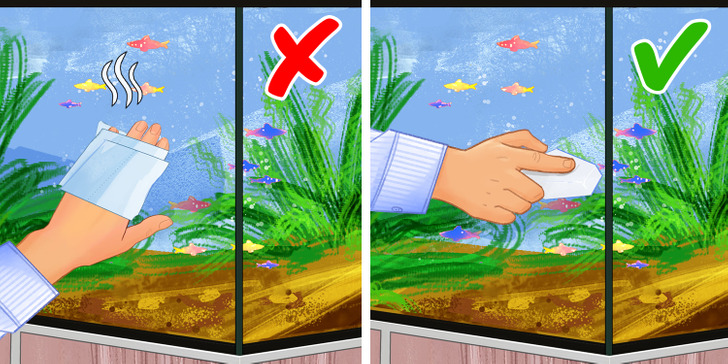
For the final crystal clear look of your aquarium, wipe the outer glass of the tank with aquarium-safe glass and acrylic cleaner to remove any water spots and smudges. Also, wipe the dust off the lid, light, and aquarium stand. Now you can relax and enjoy your aquarium.
- Note: People in online forums claim they use toilet paper to clean their aquariums. However, they worry that doing so may affect the health of their fish because of the dye and chemicals used for the scent. It’s unclear whether that can happen, but to be on the safe side, it’s better to only use recommended products.